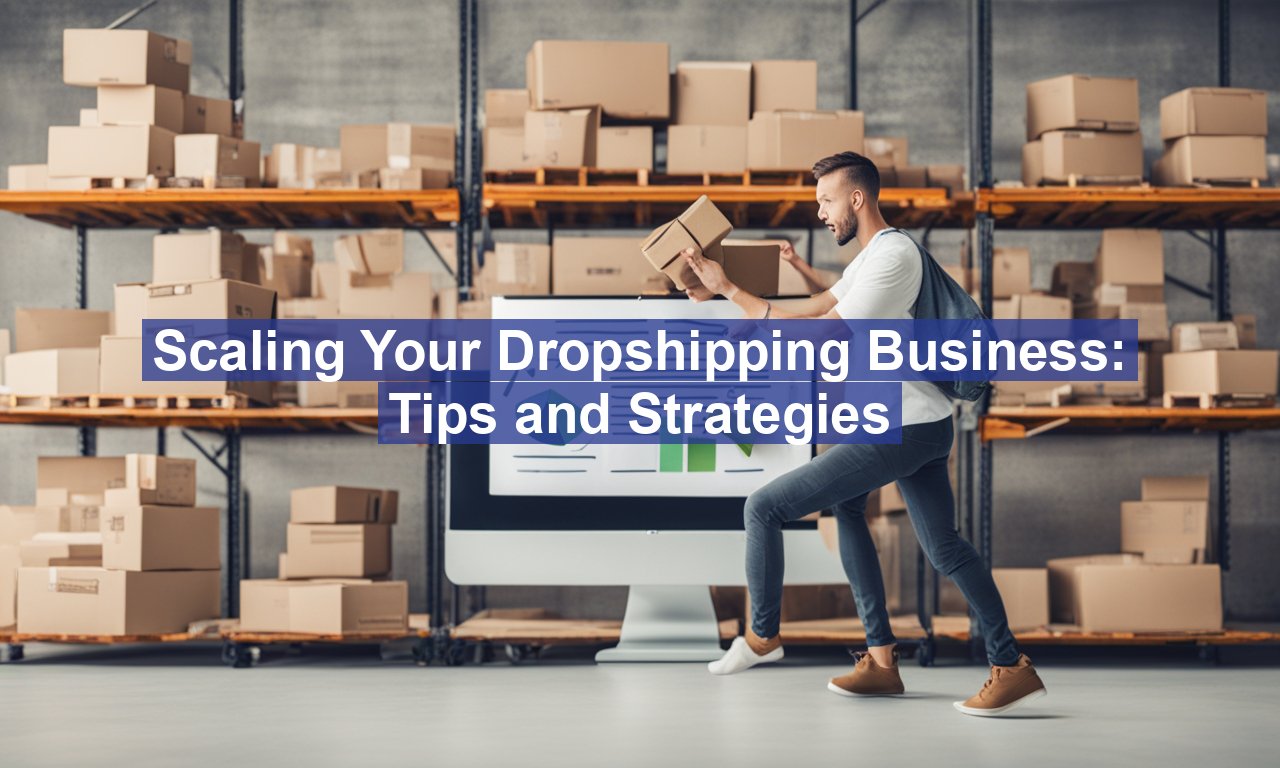Scaling your Dropshipping business: tips and strategies are much like climbing a mountain; it’s a challenging yet rewarding journey that requires precision, strategy, and endurance. Whether you’re just starting or looking to take your business to the next level, understanding the key strategies to expand efficiently is crucial to your success.
In this article, we’ll delve into actionable tips and strategies that can help you effectively scale your dropshipping business, allowing you to enhance profits and achieve sustainable growth.
Scaling Your Dropshipping Business: Tips and Strategies Step-by-Step Guide
Understanding the Basics of Dropshipping
Let’s begin by recapping the fundamental principles of dropshipping. As a business model, dropshipping involves selling products to customers without holding any inventory. Instead, when a customer places an order, the product is purchased from a third-party supplier who ships it directly to the customer.
Benefits of Dropshipping
The dropshipping model boasts several advantages that are particularly appealing to entrepreneurs:
- Low startup costs: Since you don’t need to stock inventory, initial investment is minimal.
- Flexibility: You can run your business from anywhere with an internet connection.
- Wide product selection: Access to a vast array of products to sell.
However, scaling is where many dropshippers encounter difficulties. Let’s address common questions and explore effective methods for scaling up seamlessly.
How Can I Effectively Scale My Dropshipping Business?
- Optimize Your Business Operations
Before implementing scaling strategies, ensure that your current operations are efficient. This involves streamlining processes, such as order processing, customer service, and supplier relations. Consider using an automation tool to reduce manual tasks and improve overall business efficiency. Automation can free up your time, allowing you to focus on growth strategies. - Diversify Your Product Range
One way to scale is by expanding your product offerings. Consider adding complementary products that appeal to your existing customer base. Research market trends and seasonality to introduce products with high demand. Remember, adding more products requires diligent supplier management to maintain product quality and delivery reliability. - Leverage Multiple Sales Channels
If you’re only selling on one platform, it’s time to branch out. Consider setting up additional sales channels such as Amazon, eBay, or your own e-commerce site. Diversifying where you sell can increase your reach and stabilize your revenue streams. Each platform has its audience, and tapping into multiple can lead to a significant uptick in sales.
Enhancing Your Marketing Strategy
- Invest in Paid Advertising
To scale effectively, consider allocating a budget for paid advertising. Platforms like Facebook, Google Ads, and Instagram offer targeted advertising options that can reach new customers based on their interests and behaviors. Always monitor your campaign performance and adjust targeting options for the best return on your ad spend. - Optimize for SEO
Search Engine Optimization (SEO) is a critical tool for increasing organic traffic to your online store. Conduct keyword research to ensure your site ranks for the right terms. Optimize product descriptions and blog content with SEO best practices to improve visibility on search engines. This will drive more organic traffic and reduce reliance on paid advertising. - Utilize Social Media
Harness the power of social media to engage with potential customers. Create meaningful content and interact with your audience to build a community around your brand. The goal is to establish a loyal customer base that trusts and advocates for your business, consequently leading to word-of-mouth promotion.
Implementing Robust Customer Retention Strategies
- Focus on Customer Experience
Scaling isn’t just about acquiring new customers; it’s also about retaining existing ones. Focus on providing an exceptional customer experience. This involves efficient customer support, user-friendly website navigation, and fast shipping. Positive experiences can lead to repeat business and referrals. - Loyalty Programs and Discounts
Create loyalty programs that reward customers for repeat purchases. Offer special discounts to returning customers as a token of appreciation. This not only incentivizes additional purchases but can also enhance overall brand loyalty.
Monitoring and Analyzing Performance
Track Key Metrics
As you scale, tracking business performance is more critical than ever. Focus on key metrics such as customer acquisition cost, average order value, and conversion rate. Use analytics tools to monitor these metrics and make data-driven decisions to optimize your operations.
Regularly Review Suppliers
Scaling will likely involve onboarding new suppliers. Regularly evaluate supplier performance to ensure they can meet increased demand without compromising quality. Effective supplier management can mitigate risks associated with scaling and maintain customer satisfaction.
Scaling your Dropshipping business: tips and strategies are no small feat, but with strategic planning, the right tools, and a focus on customer satisfaction, it is entirely achievable. By implementing these strategies and continuously optimizing your operations, you will position your business for sustainable growth and long-term success in the competitive e-commerce landscape.
For more insights on dropshipping success, explore this detailed guide that delves into the nuances of running a profitable dropshipping business.


